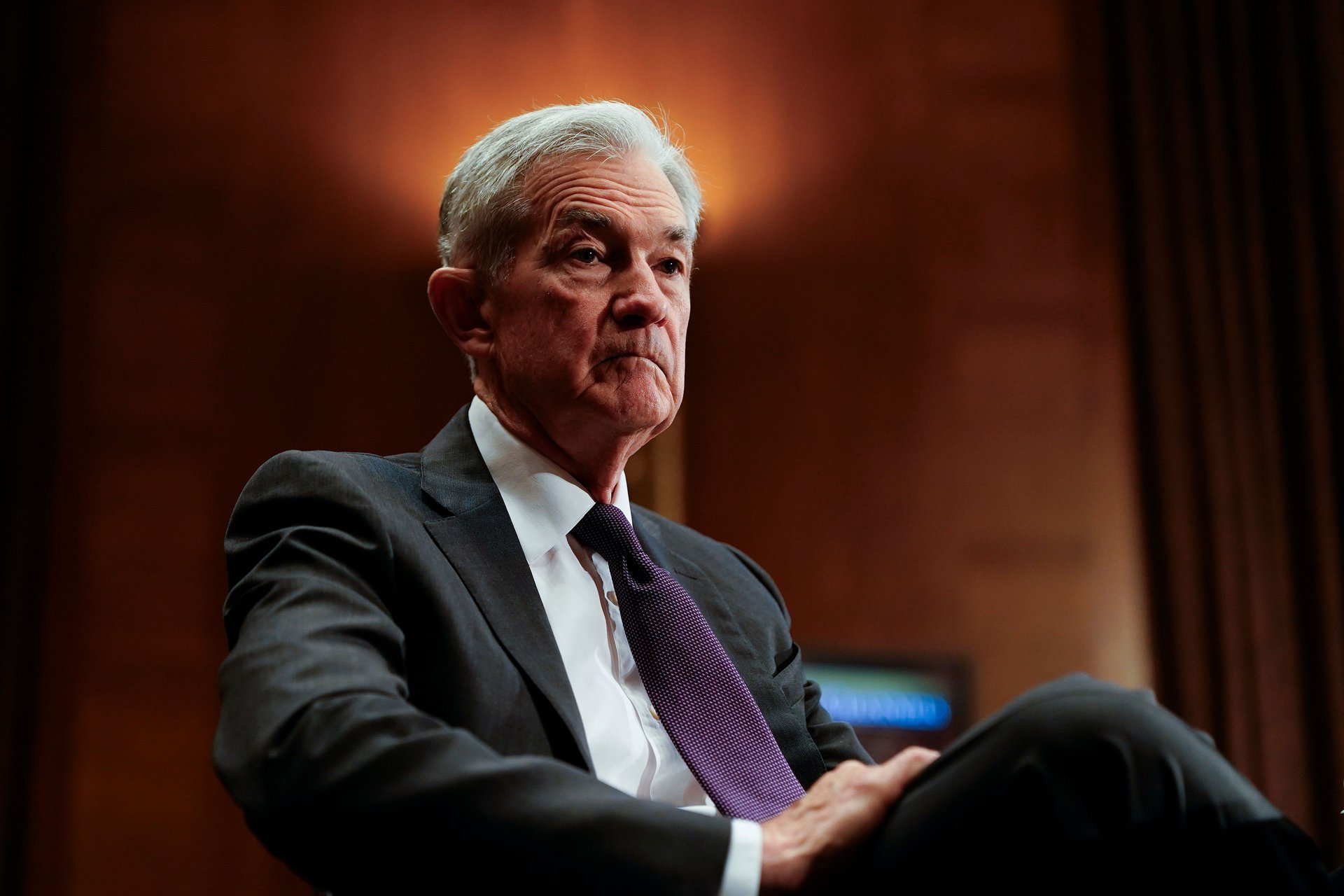Trump says Fed Chair Jerome Powell should 'resign immediately'
The president escalated his feud with the Federal Reserve chair — again — just as the June jobs report diminished the case for an interest rate cut

Kent Nishimura/Getty Images
President Donald Trump wants Jerome Powell gone. Again. In a now-familiar twist in one of Washington’s most lopsided grudge matches, the president took to Truth Social on Wednesday evening to demand that the Federal Reserve chair “resign immediately!!!” furious, once again, that Powell won’t cut rates on cue.
Suggested Reading
Trump also linked to a Bloomberg article where Federal Housing Finance Agency director Bill Pulte urged Congress to investigate the Fed chair. Pulte accused Powell of deceptive testimony regarding the central bank’s $2.5 million headquarters renovation — and Trump, never one to let a viral post go to waste, quickly picked up the thread.
Related Content
Trump’s attacks on Powell aren’t new. The president has been targeting the central bank chief since he tapped him to lead the Fed in 2017. And Trump, frustrated by rate hikes that he claims have throttled growth, has never stopped pushing.
But this year, the president has ramped up his criticism (and name-calling). The president has called Powell a “major loser” and a “total stiff,” has said Powell’s “termination cannot come soon enough,” has floated the idea of making Powell a lame-duck Fed Chair, has sent Powell a handwritten note attacking him for not lowering interest rates, and said he thinks Powell “hates” him. After a rate pause this summer, Trump labeled Powell “a FOOL who doesn’t have a clue” and mused publicly about firing the Fed Chair, though that option doesn’t exist in law. (The Federal Reserve Act stipulates that a Fed chair can only be removed for cause, not for policy disagreements.)
This time, Trump’s anger is once again centered on rate policy — but the political stakes are even higher. With inflation cooling and investors hoping for relief, Powell has held back on cutting rates, warning that the Fed still needs to see more sustained disinflation before making a move. The president’s volatile tariff policy has complicated the game; Powell said recently that the Fed would have already cut rates if not for the levies.
The recent jobs report didn’t help Trump’s case. On Thursday morning, data showed that the U.S. added 147,000 jobs in June, beating expectations and prompting investors to push back bets on a July rate cut. Unemployment ticked up slightly to 4.1%, but wage growth remained strong — enough for the Fed to maintain its wait-and-see approach.
“Wait and see” has been Powell’s message for months. While inflation has cooled from its peak, the Fed chair has said he wants more sustained evidence that inflation is on track to return to 2% before cutting rates. He has also pointed to a “solid economy” as a reason not to move prematurely. At an ECB forum in Portugal last week, Powell said recent tariffs and government spending could keep inflation sticky and buy the Fed some time.
The political heat isn’t just coming from Trump. Treasury Secretary Scott Bessent chimed in on Monday, loosely comparing the Fed’s caution to that of “an old person who is afraid of falling after having stumbled once” and quipping that “tariff derangement syndrome” had spread to Fed officials.
Powell, for his part, has rarely responded directly to Trump’s attacks. When he has, he’s kept things characteristically measured. In 2019, he said, “The law is clear that I have a four-year term, and I fully intend to serve it.” That term ended in 2022 — only for then-President Joe Biden to reappoint him, a rare moment of bipartisan consensus. Powell’s current term runs through May 2026.
Behind the scenes, Powell has brushed off the insults, choosing instead to focus on the Fed’s dual mandate: maximum employment and price stability. His public statements remain dry, data-driven, and insulated from politics — a tone that, to his critics, reads as aloof but that to his defenders signals important independence.
Still, Trump’s attacks matter.
Markets listen when presidents speak, and the perception of political pressure on the Fed can complicate the central bank’s job. Powell has insisted that the Fed doesn’t take politics into account, but with Trump calling for his job, the balancing act gets tougher. For Trump, the pressure campaign isn’t just personal — it’s strategic.
Trump’s comments are part of a broader push to cast the Fed as an obstacle to economic recovery — and to frame any downturn as Powell’s fault, not Trump’s. Lower rates could juice the economy heading into 2026 — which could be politically useful for Trump. If the economy falters, Trump has already teed up a scapegoat.
For now, Powell is still the Fed chair. Rates remain unchanged. And Trump’s most reliable economic foil remains firmly in place — whether the president likes it or not.
